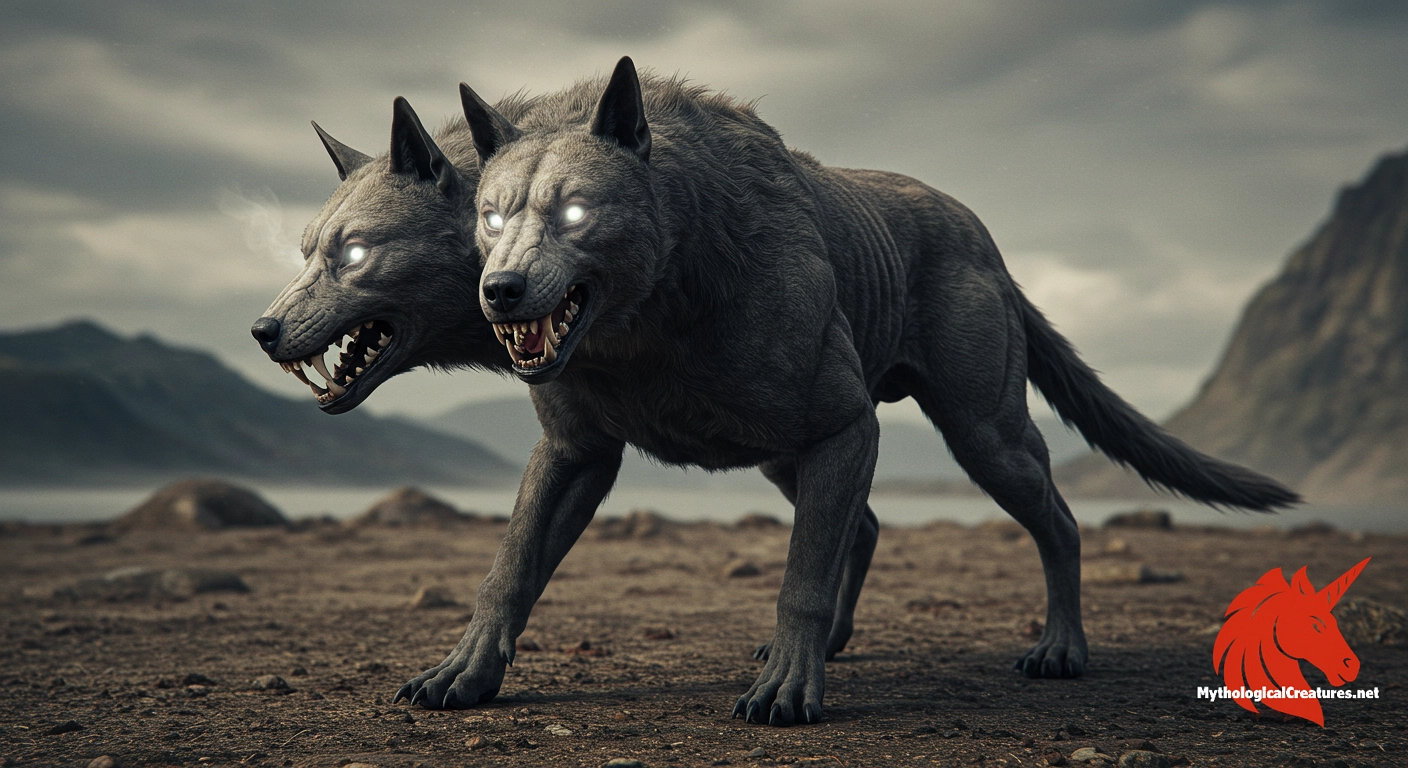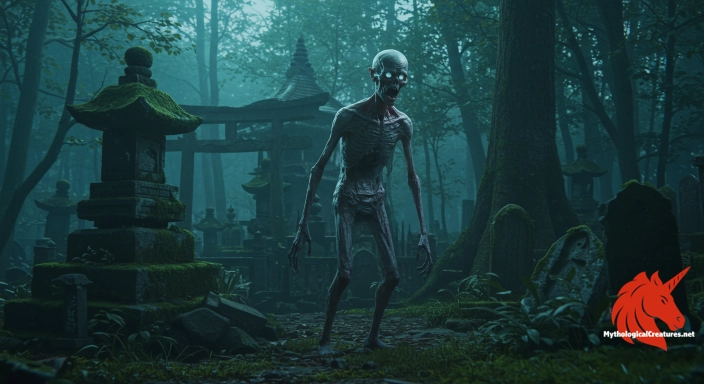Orthrus: Orthrus is a fearsome two-headed dog from Greek mythology, renowned for guarding Geryon's cattle and confronting Heracles.

Orthrus
Orthrus - Orthrus symbolizes the formidable challenges faced by heroes in Greek myths and exemplifies the monstrous offspring of Echidna and Typhon.
Origins & First Encounters
Orthrus, with his fearsome dual heads, remains etched in Greek mythology as a formidable guardian. Born of the monstrous lineage of Echidna and Typhon, he embodied the dark essence of primordial chaos. First chronicled by the mythographer Apollodorus, his tale intertwines with the epic sagas of heroes and titanic destinies.
Entrusted with guarding the prized cattle of the giant Geryon, his presence symbolised the perilous boundary between mortal aspiration and divine retribution. His role as a sentinel underscored the eternal struggle between order and chaos, echoing themes prevalent in ancient lore. The rigorous challenges he presented paved the way for heroic exploits that tested both strength and wit.
In the tapestry of Greek myth, Orthrus stands alongside other monstrous figures who protected sacred thresholds. His dual heads not only signified enhanced vigilance but also served as a metaphorical representation of internal conflict. Ultimately, his enduring narrative continues to fascinate, bridging the classical past with timeless cultural resonance.
Source Texts & Tale Variants
Primary literary sources firmly establish Orthrus within the Greek mythos, with Apollodorus providing one of the most detailed accounts of his existence. In these ancient texts, his guardianship over Geryon’s cattle is portrayed as a daunting challenge that amplifies the heroic narratives of later figures. The succinct yet potent depiction in classical literature affords ample room for interpretative richness and thematic depth. Over time, subsequent oral traditions and fragmented accounts have subtly expanded upon his role, adding layers to his myth.
Later Hellenistic writings and artistic depictions have contributed to transforming his image, albeit with minimal embellishment compared to more celebrated figures. While his appearances might be brief, they have inspired modern reinterpretations and scholarly debates regarding the function of monstrous protectors. These diverse sources, though limited in volume, underline Orthrus’s significance as an archetypal guardian. Collectively, they beckon the modern observer to consider the intrinsic power of myth even in its most sparse literary references.
Form & Powers
Classical depictions envision Orthrus as a two-headed canine whose dual visages exude a savage symmetry. His eyes are often described as gleaming with an almost otherworldly light, each set reflecting a relentless alertness. The robust, muscular body to which his heads are affixed underscores a blend of agility and raw power.
Every head is portrayed with rows of sharp, formidable fangs that glint with a promise of danger, while a coarse, bristly coat in shadowy hues cloaks his entire form. Notable details, such as scars along his flanks and the twitch of his ears, suggest many past confrontations that have only added to his legend. The portrayal often hints at a creature sculpted by both nature and myth, where every line and mark speaks of its martial heritage.
The overall symmetry in his dual-headed structure reinforces the idea of balanced yet independent menace. His sturdy limbs and agile frame further contribute to an image of a creature designed for relentless vigilance. In essence, Orthrus’s physical representation is a masterful blend of beauty and brutality that continues to captivate the imagination.
Regional Faces
Though Orthrus is deeply rooted in Greek mythology, his tale has travelled and transformed through various regional retellings. In certain Mediterranean folk traditions, he is not solely seen as a monstrous guardian but also as a protector of sacred boundaries and pastoral lands. These local narratives infuse his character with culturally specific attributes that reflect the environmental realities and spiritual beliefs of the region.
Some traditions even reinterpret his fearsome image as emblematic of nature’s dual aspects, where one head watches over the tangible world while the other peers into the mystic unknown. This duality is celebrated in local lore, which often imbues him with a wisdom that transcends mere ferocity. The adaptations serve to humanise his myth, providing a nuanced layer where fear and reverence coexist.
In regions influenced by Hellenistic culture, Orthrus is sometimes merged with indigenous animal spirits, creating hybrid figures that echo his original myth while resonating with local symbolism. Such variations not only enrich his narrative but also attest to the enduring flexibility of myth as it moves between cultures.
Cultural Parallels
Orthrus embodies an archetype that transcends national boundaries, resonating with the universal motif of multi-headed guardians found in global mythologies. His dual-headed form invites comparisons with legendary creatures from diverse cultures, each symbolising the convergence of opposing forces. This shared motif is apparent in numerous traditions where double or multiple heads represent not only physical might but also deeper cosmic dualities.
The close relationship between Orthrus and his more famous kin, Cerberus, further accentuates this thematic preoccupation, creating a dialogue about the nature of guardianship and threshold protection. Similar spectral hounds and guardians appear in various Celtic and Norse legends, where they embody both menace and mysticism. Across Eastern traditions, dualities manifested in animal forms similarly reflect the balancing of benevolent and malevolent energies.
Such comparative insights underscore a widespread human fascination with creatures that occupy liminal spaces between worlds. By examining Orthrus alongside these global examples, one recognises the common cultural impulse to revere and fear the unknown, making him a vital link in the chain of mythological guardianship.
Legacy & Modern Evolution
Orthrus’s myth has undergone a significant transformation from its ancient origins to its modern reinterpretations. Early depictions rooted in Greek mythology presented him as an inexorable guardian whose terrifying presence underscored the challenges faced by heroes such as Heracles. Over time, his image gradually evolved into a broader emblem of duality, symbolising not only brute force but also the complex interplay between order and chaos.
In contemporary literature and art, Orthrus is often reimagined as a metaphor for internal dichotomies and the perpetual battle between opposing forces. Modern adaptations, which span graphic novels, films, and digital illustrations, capture his essence while infusing his dual nature with new symbolic meanings. This evolution reflects a shift from a purely monstrous portrayal to one that recognises multilayered human experiences and conflicts.
The enduring allure of Orthrus lies in his ability to bridge classical myth with modern narratives. His legendary status invites audiences to explore themes of protection, transformation, and the eternal struggle against the unknown. In every artistic reinvention, Orthrus remains a potent symbol of the mythic guardian, ensuring his legacy endures within the cultural imagination.
Interesting Fact
Orthrus is one of the few mythological creatures celebrated for having two heads, a trait that links him to other legendary multi-headed beasts like Cerberus.
Quick Creature Info
Origin:
Features:
Associations:
Our Mythic Legendary Rating:

Also Sometimes Known As:
Habitat:
Supernatural Powers:
Physical Attributes:
Abilities:
Behavior:
Weaknesses:
Lore:
References
Discover Another Mythical Legend You May Not Have Heard Of?
Uncover the mysteries of ancient folklore and expand your knowledge of legendary beings from cultures around the world.
Dare to Meet the Jikininki....
Mythical Disclaimer: The images and data on this site are derived from various historical and literary sources, but we have found that many myths often have multiple versions and interpretations across references, sometimes contradictory. As a result, these creature depictions are artistic interpretations—imaginative blends of folklore, legend, and a dash of AI guesswork. Because creature descriptions vary widely, our illustrations and accompanying information represent our best effort to honor mythology while bridging creative gaps. Enjoy these interpretations—just remember, we've done our best to respect the stories and validate available data, but in the realm of mythology, details often shift, imagination leads the way, and nothing is ever set in stone!
Curated by the Mythological Creatures Team (rev. May 2025)
